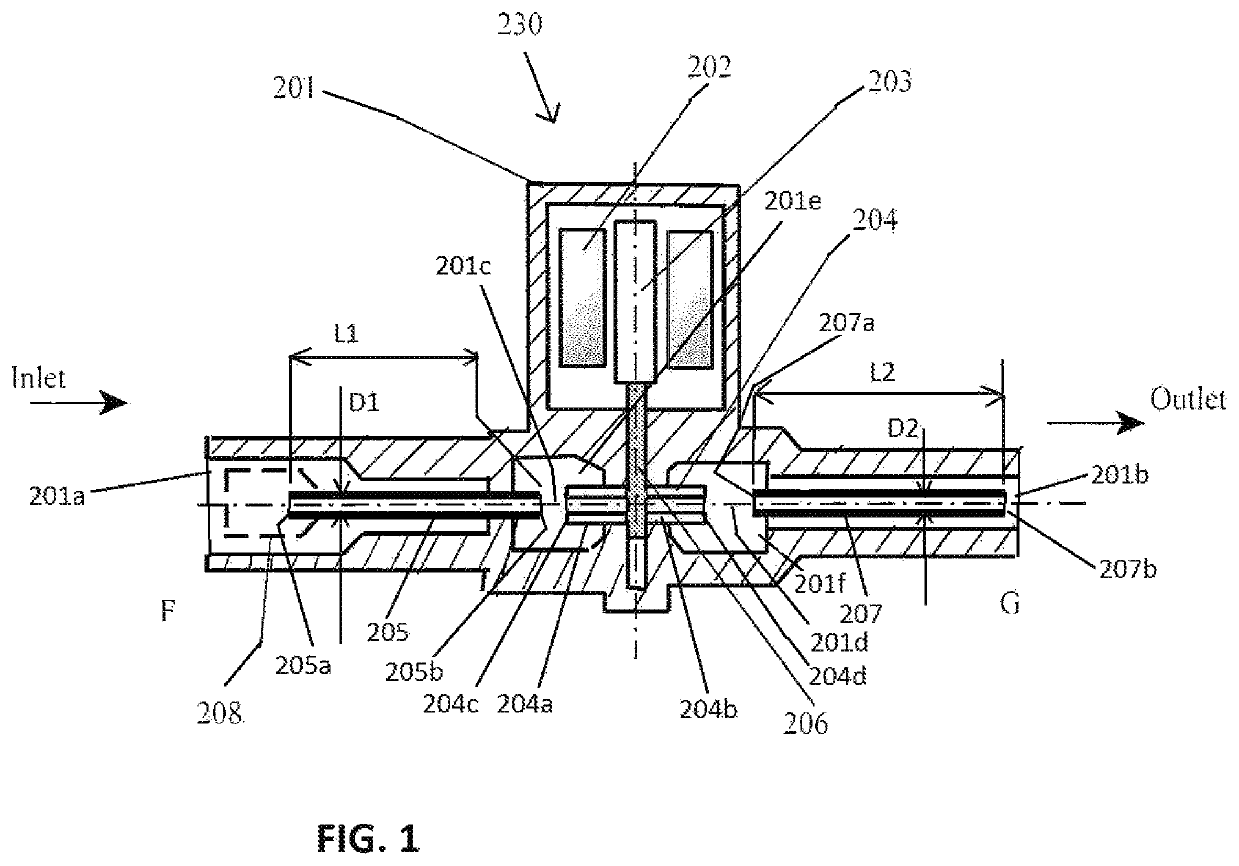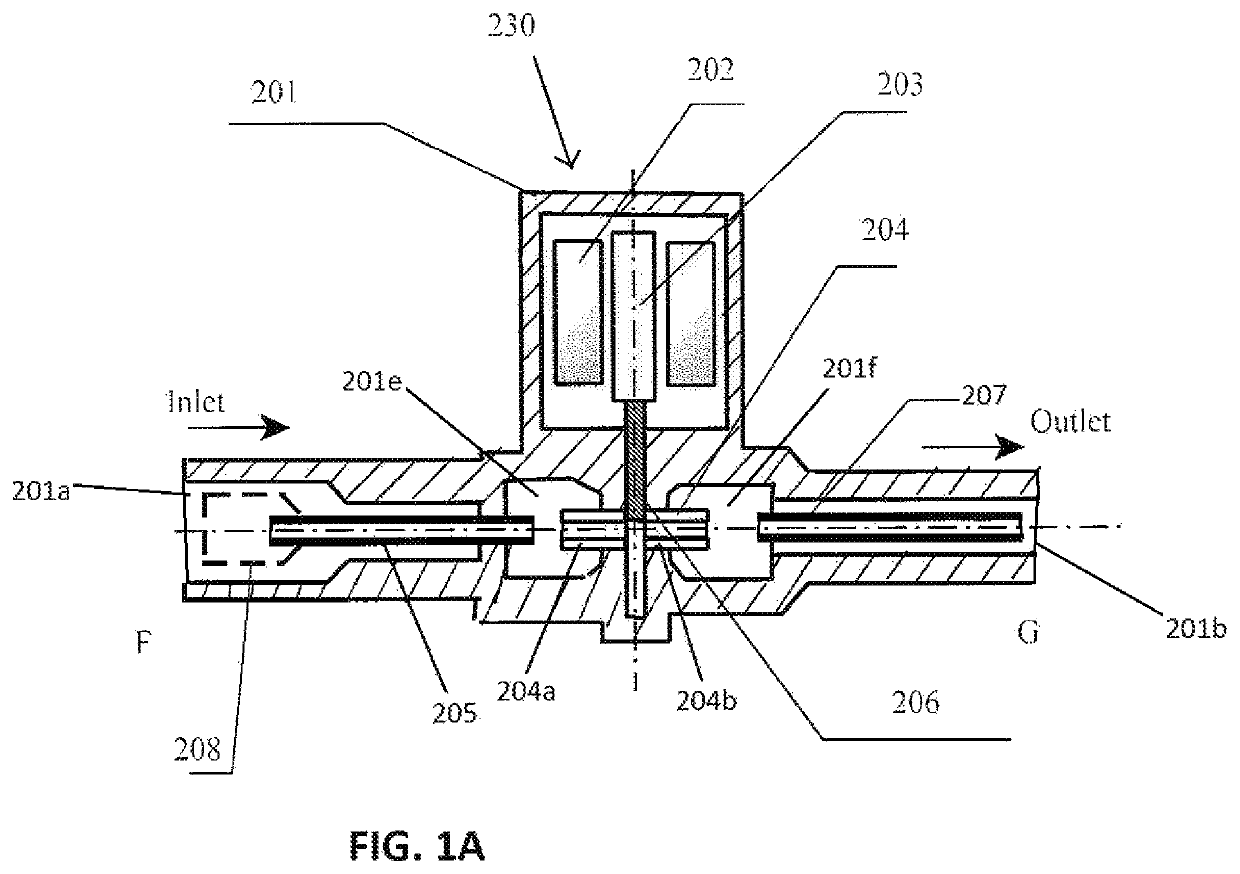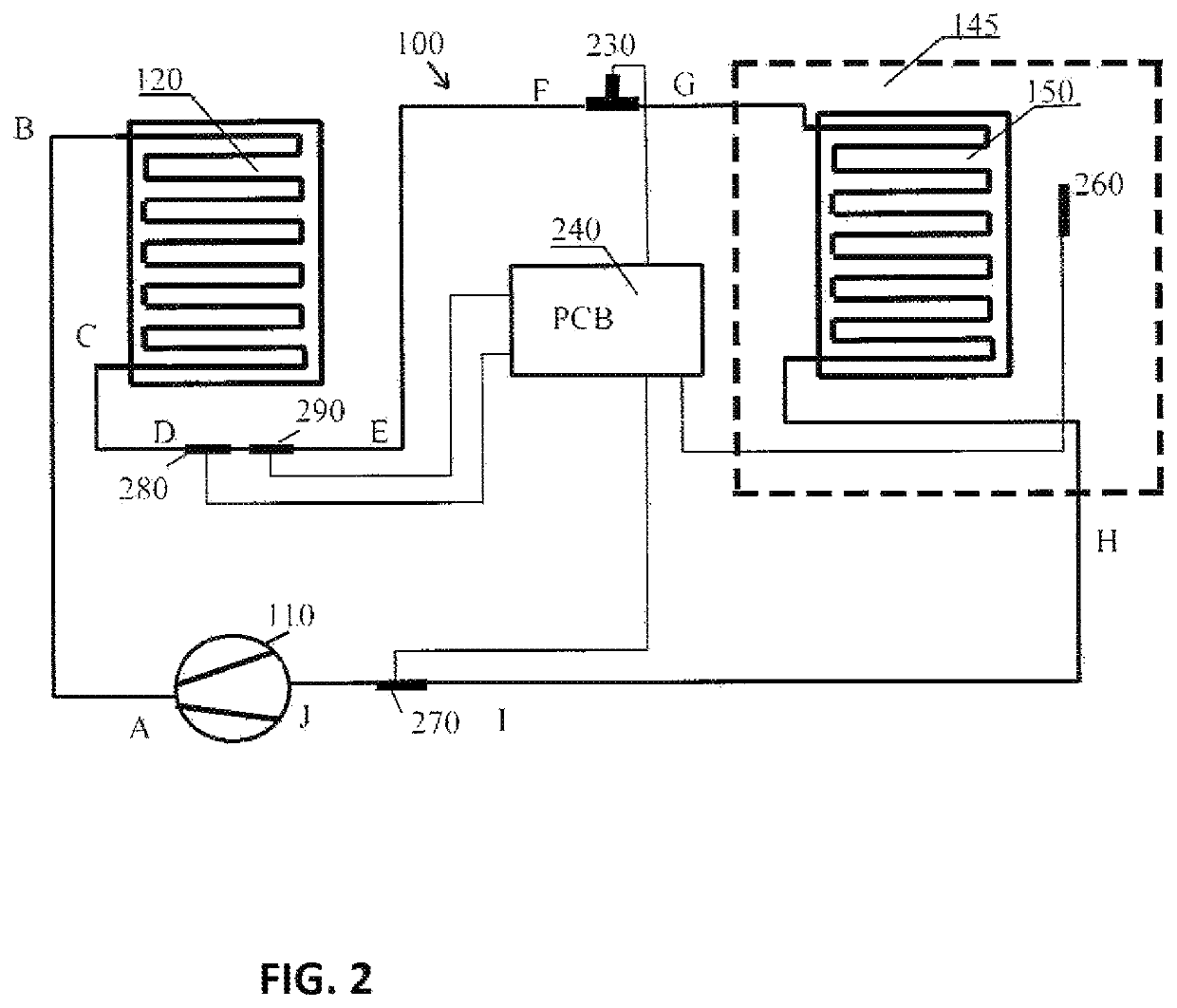Digital controlled solenoid capillary tube metering devices of refrigeration systems
a technology of solenoid capillary tube and digital control, which is applied in the field of mechanical refrigeration system, can solve the problems of reducing the refrigeration effectiveness of the system, reducing the portion of refrigerant liquid, and unavoidably increasing valve costs, so as to reduce the size of the valve, and reduce the effect of refrigerant liquid portion
- Summary
- Abstract
- Description
- Claims
- Application Information
AI Technical Summary
Benefits of technology
Problems solved by technology
Method used
Image
Examples
Embodiment Construction
[0033]While this invention is susceptible of embodiment in many different forms, there are shown in the drawings, and will be described herein in detail, specific embodiments thereof with the understanding that the present disclosure is to be considered as an exemplification of the principles of the invention and is not intended to limit the invention to the specific embodiments illustrated.
[0034]FIG. 1 shows the structure of a valve 230, such as a solenoid capillary tube expansion valve 230 of a DCSCEV. The valve 230 is controlled by a controller 240 in the form of a printed circuit board (PCB) or other digital electronics device. The valve 230 can be digitally controlled to completely either open or close for selected durations according to rules set by the controller 240 in response to sensors.
[0035]The valve 230 includes a body 201 having a valve inlet 201a and a valve outlet 201b, a coil 202, a plunger 203, a seat 204 having an inlet seat tube 204a and an outlet seat tube 204b,...
PUM
 Login to View More
Login to View More Abstract
Description
Claims
Application Information
 Login to View More
Login to View More - R&D
- Intellectual Property
- Life Sciences
- Materials
- Tech Scout
- Unparalleled Data Quality
- Higher Quality Content
- 60% Fewer Hallucinations
Browse by: Latest US Patents, China's latest patents, Technical Efficacy Thesaurus, Application Domain, Technology Topic, Popular Technical Reports.
© 2025 PatSnap. All rights reserved.Legal|Privacy policy|Modern Slavery Act Transparency Statement|Sitemap|About US| Contact US: help@patsnap.com



